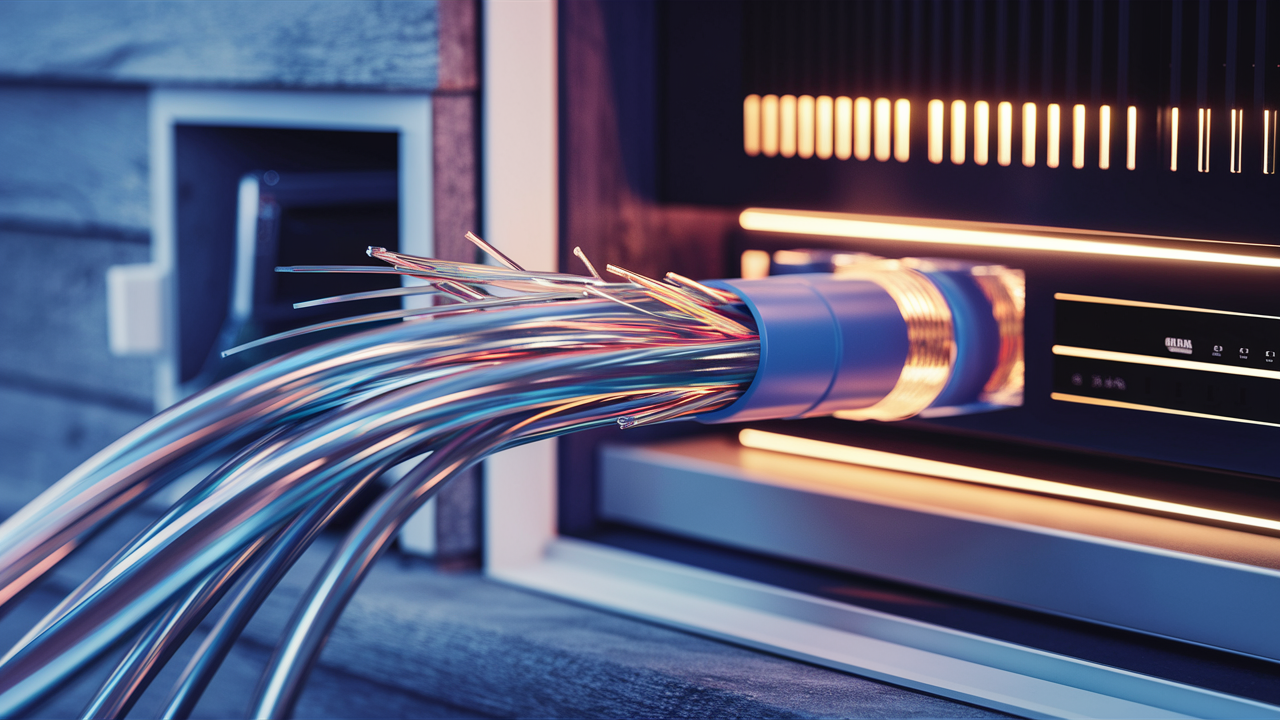How does fiber internet enter your house?

If you are planning on getting fiber optic internet service in your home, you might have a few questions, one of which could be – how does the fiber cable get into my home? Knowing the kind of route that fiber will take is very important in preparation for installation work. This is how fibers arrive at your home’s interior and an introduction to the installation of fibers in homes.
It is often said that the end justifies the means, and this phrase could not be truer when it comes to roads leading to one’s home.
Oftentimes, fiber optic cables are installed above ground in conduits that are buried beneath the streets of a neighborhood. From there, subsidiary fiber cables run to clusters of households and other establishments. For instance, if your house is located near a street intersection or if you reside at the end of a street, it is not uncommon to find the fiber cable is first attached to the utility poles before the connection to your house.
Once the fiber cable gets to your house, the most probable way it will get in is through a small trench dug from the road right up to your compound through a process known as fiber-to-the-premises. This keeps the glass fiber wires protected from the harsh environment as well as offering a direct line to your structure. The position of the conduit is usually chosen to be as straight as installers can make it, excluding any objects such as trees and gardens, septic tanks, or deck footings.
Entering the Home
Passing this conduit to your exterior wall, the cable must get inside your home. There are three main options for getting fiber through the wall.
- Existing Pipe Conduit – This is specifically if you already have a wide tube running through the wall for TV cables, cable, phone, or electrical wiring, then fiber can be passed through this tunnel without necessarily having to drill any new holes. This leverage on existing system installations.
- Direct Penetration – For exterior walls such as brick, stucco, concrete, and other solid surfaces, a 5/8” hole is drilled straight through the wall so that the fiber can pass through into the interior. It is then closed to prevent water or rodents from penetrating the hole, especially after the cable has been passed through it.
- Floorboard Conduit Installation - In case the installer is accessing a crawl space or a basement, he may decide to advance the fiber conduit through the floorboards to avoid a direct entry point to the exterior. Another access panel on floor joists within the crawl area will facilitate feeding cable to the first living level.
Connecting to Internet Equipment
After entering a home, it connects to the optic terminal equipment (OTE) directly. This is a white box about the size of a WiFi router which once connected to the provider’s fibre optics network becomes the hand-off point into the house. It transforms the light signals received into electric signals to produce your internet, television, and telephone facility.
In the case of obtaining further connectivity, additional ethernet cables or coaxial lines in the OTE can spread connectivity to specific rooms and devices. For WiFi, a wireless router is also plugged into the OTE to provide wireless Internet around the house.
Any loose fiber cables that may be required in the future for maintenance purposes or otherwise are neatly wrapped and fixed on the adjacent walls or kept in the crawl space for floor-fed conduits. The technicians in the installation are very cautious with the cables they lay to avoid having them hanging loosely or causing people to trip over them.
Parting Thoughts
It is also important to have an understanding of how fiber gets from the street to your devices before installation to avoid wrong expectations. Although some conduits have to be buried into the ground, or walls drilled to accommodate them, your property is usually left tidy once all lines are pulled. On the following day, you could start to experience lightning-fast fiber speeds that make the web even more of a responsive place than you could have ever imagined!
Upgrade to faster, more reliable AT&T Fiber Internet today! Call us at +1 844-905-5002 and get connected with speeds that keep you ahead.





